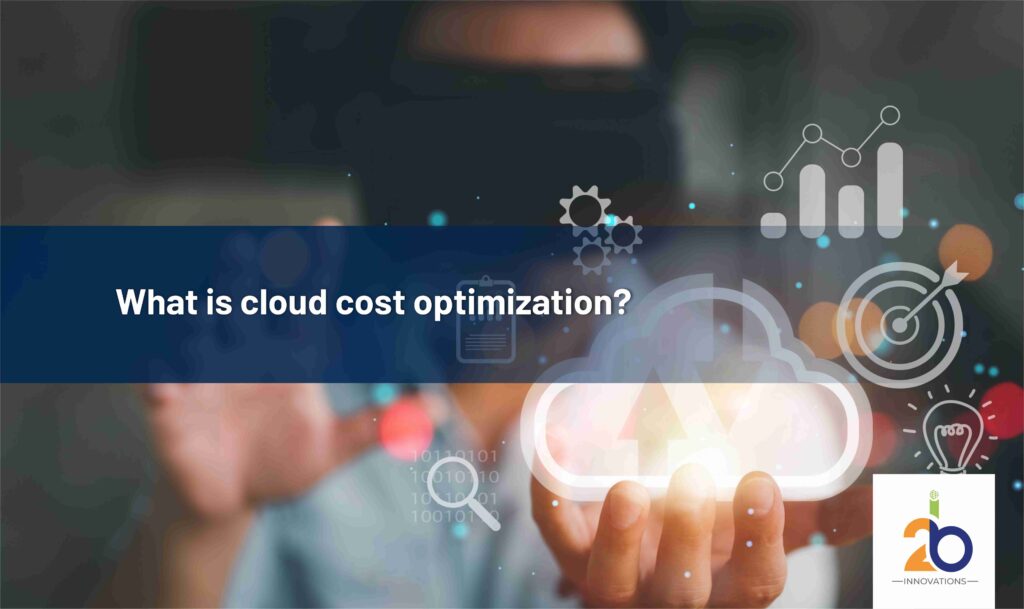
Although the Cloud has revolutionized web technology by making scalability practically infinite, it has also made it more challenging to comprehend and optimize cloud expenditure.
The ability to effortlessly scale infrastructure and resources up or down as needed is a significant selling point for cloud service providers. Costs may quickly escalate out of control for many companies if cloud expenditure needs to be optimized correctly.
Switching to the Cloud comes with a baggage of advantages. Enterprise-level infrastructure and services are open to everyone, not big companies with lots of IT money. At the same time, the users of the Cloud infrastructure and service companies like AWS, Google Cloud, and Azure need to learn how to get the most out of their cloud costs at some point. Not all small businesses stay small; when you think big, you can plan, get new ideas, and win big.
Why do you need Cloud cost optimization?
Businesses waste about 32% of the money they spend on cloud services. It’s quite a considerable amount, irrespective of the expanses your company pays on the Cloud annually. That’s a significant amount of money, no matter how much your company spends on the Cloud yearly. By finding resources and tools that aren’t being used, cloud optimization helps cut down on waste and avoid overspending.
Not only cutting or reducing the expenditures but the prices must be well aligned with the goals of your business. That means paying more for cloud services is worth it if they bring you good profits or lead to more valuable activities.
Cloud cost optimization is all about knowing how much your cloud operations cost and making intelligent changes. This way, you can control cloud costs without affecting speed.
Questions to ask yourself about optimizing cloud costs
If you plan, you can keep track of your cloud costs and avoid unexpected overspending. Before, during, and after moving to the Cloud, your IT team should think about these questions:
- How can we look at the costs of the Cloud across the whole company and ensure that expenses are shared relatively across teams and organizations?
- How will we set up our cloud tools, keep track of our spending, and ensure it stays within our budget?
- How do you set limits on expenses like buying and spending too much?
- How will we keep track of metrics? Besides your cloud bill, this could include the cost of services, capacity, usage, speed, and availability.
Tools for Cloud Cost Optimization
The Cloud cost management tools help you analyze the bills, features, and other settings that can help you save money. Some cloud companies, like Google Cloud, offer tools for managing costs. Azure and AWS also provide tools for managing finances in the Cloud.
There are also cloud cost tools made by separate businesses that compare prices from different sellers. For instance, 2b Innovation can help you best use your computer, storage, and network resources by automating essential tasks in real-time without human monitoring. These tools can work with data from multiple clouds and make reports showing that data. Some say that the costs of the Cloud are like the costs of building your computer room.
Understand and leverage cloud pricing models.
Cloud service companies offer various pricing plans and service levels that you can use to match better resources and costs with the needs of your applications, the level of availability you need, and the value to your business. Finding solutions to these problems can be challenging. These are some general things you can do:
- Use reserved instances (RIS) to your advantage. These pre-paid computer instances come with significant savings (often up to 75%) and can be used for a set amount of time.
- Use pricing for savings plans, which offer low prices for promises of one or three years.
- When you can, use Spot Instances (auctioned off extra resources) to make last-minute purchases. Spot Instances can handle workloads like processing big data and machine learning, managing distributed databases, and running CI/CD processes.
- Avoid sending data that isn’t needed to save money on data transfer fees.
Consider FinOps for cloud cost optimization.
FinOps is a cloud financial management technique that helps businesses get the most out of their hybrid and multi-cloud environments. The name comes from the words “finance” and “devops.” A cross-functional FinOps team, which includes people from IT, finance, and engineering, is used by many companies to bring financial accountability to the Cloud as part of their cloud cost optimization strategy and execution.
FinOps practices depend on automation and reporting to boost ROI by constantly finding ways to be more efficient and acting in real time to improve cloud optimization. By automating their dynamic resourcing, businesses can ensure that the technology underneath their cloud environment always meets service-level goals.
The FinOps Foundation says that when FinOps is done right, more than 90% of cloud spending is allocated, so there is little difference between what was planned and what was spent.
Three phases of the FinOps journey: Inform, Optimize, and Operate
Different departments, teams, or applications will be on their own FinOps journeys, so a company may be in multiple phases simultaneously. These phases are information, optimization, and running.
Inform: For organizations to make intelligent choices about allocation, benchmarking, budgeting, and forecasting, they need accurate and up-to-date insight. Having correct and thorough information about how your cloud spending was spent lets you do a chargeback and show back correctly. The FinOps team members always stay up for feedback if they stick within their budgets, make accurate predictions, and meet their return on investment (ROI) goals.
Optimise: The second step is to make the cloud impact as small as possible. There are several ways for optimization. It costs the most for on-demand power. Cloud service providers offer discounts for making reservations ahead of time and making more significant promises. Teams can also improve the cloud environment by automating the rightsizing of settings and turning off resources that aren’t being used.
Operate: Companies move on to the third step, where they can keep track of metrics like speed, quality, and cost for their business goals. The FinOps Foundation says, “An organization can only be successful if it creates a FinOps culture. It includes creating a Cloud Cost Centre of Excellence with business, financial, and operational stakeholders who also decide on the right governance policies and models.”
The FinOps Maturity Model
According to the FinOps Foundation, there are three levels of maturity: “crawl,” “walk,” and “run.” For businesses and organizations at the beginning level of operations, “Crawl” is suitable. Meanwhile, the “Walk” level is for higher organizations.
Crawl- The organization at the crawl level does the most basic reporting and tools, sets up basic KPIs, and plans to only work on the “low-hanging fruit.” Most of their cloud spending goes to this; the difference between what they expected to spend and what they paid is 20%.
Walk: the company knows about and uses cloud optimization tools. They point out the tough edge cases but don’t do anything about them. They made KPIs and goals that were middle to high. They spend about 80% of their cloud budget on this; the difference between what they planned and paid is 15%.
Run: If an organization is at the run level, its teams fully understand how to use cloud optimization tools and put them to use in cloud operations. They deal with tricky edge cases, set very high KPIs and goals, and like automation. They spend over 90% of their cloud budget on this, and their accuracy in predicting how much they will pay is about 12%.
Cloud cost optimization and 2b Innovations
Many businesses use complicated apps, making it hard for IT teams to keep up with changing needs. When the performance of an app goes down, these teams often respond slowly after the fact. To keep things running smoothly, they may set up more tools than they need for their cloud environment. It could lead to a big cloud bill and a disappointing return on investment (ROI). With mixed cloud cost optimization, IBM tells clients to keep costs down.
2b Innovation is a hybrid cloud cost optimization tool that takes away the guesswork that leads to over or under-provisioning application resources. It saves time and money. Teams can continuously handle essential actions in real-time and ensure that your apps make the best use of compute storage and network resources at all stack levels.
Let’s rethink how the Cloud works. What would you automate to ensure applications work well at the lowest cost if you set up the Cloud for a new business?



